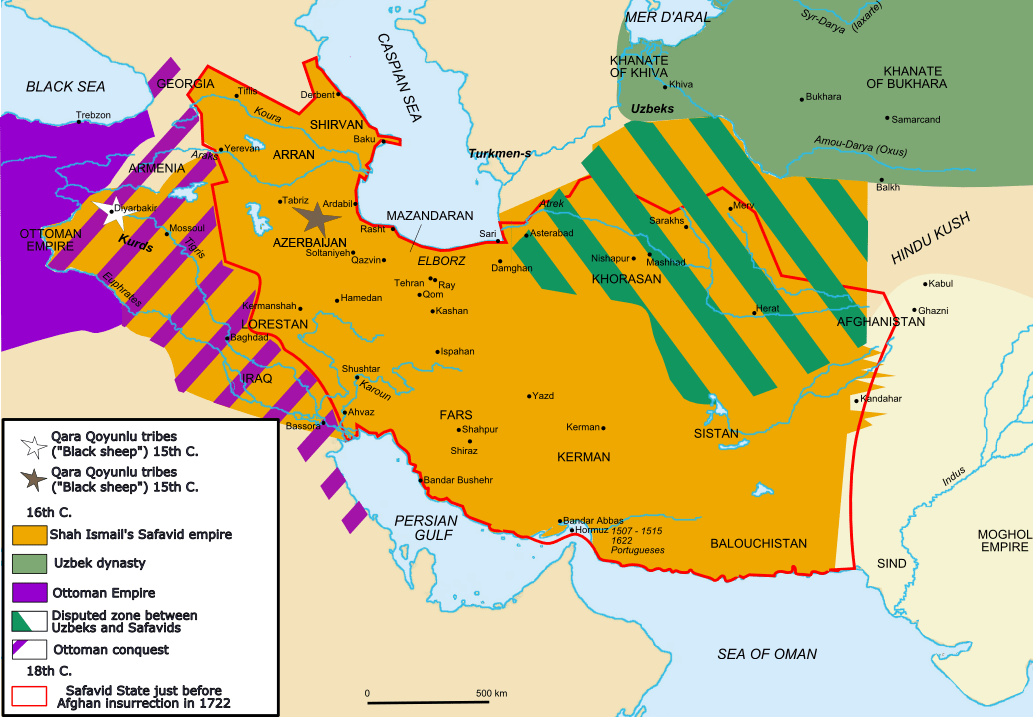In 1590/1, three years after he had deposed his father, Shah Abbas visited Isfahan[1]. Aged only nineteen, he was still fighting to re-conquer his own country. He had recently made a humiliating – if pragmatic – peace with the Ottomans; as well as losing Mashhad (and the important Shia shrine there) to the Uzbeks. Shortly after arriving in Isfahan, he blinded his father and brothers – to prevent them seizing the throne. The rebellious town governor defended the citadel with muskets, and Abbas had to dispatch soldiers to overpower the insurgents. More positively, the Shah gave orders for some construction: he commanded the building of a new qaysariyya (royal market / market portal); as well as the levelling of a maydan – intended to function as a royal centre for equestrian sports and other entertainments.
As Abbas’ reign progressed, he was increasingly in control. In Isfahan, the building of an opulent avenue of leisure, the Chahar Bagh, started (in around 1596), and the city was designated as the official capital (in 1597/8).
By 1602, Abbas had stabilised and was about to extend his frontiers. He had defeated the Uzbeks, and was about to have the first of his victories against the formidable Ottomans. He had initiated diplomatic contacts with Europe. In Isfahan, in 1602, the Shah ordered a large-scale commercial redevelopment. A second phase of construction was intended to make the maydan into “a rival and possible replacement of the old market district”[2]. In parallel, there was the construction of the Lotfollah chapel-mosque, and the first of several extensions to the Ali Qapu palace-gatehouse.
Later, between 1611 and 1638, the construction of the Masjid Shah marked an “unambiguous and very public gesture of confidence in … the thorny issue of kingship and legitimacy”[3]. With the two mosques on the maydan oriented towards the qibla, the maydan gained imposing slanted perspectives. Ali Qapu continued to be extended and elevated. The various monuments which were successively constructed around the maydan appositely juxtaposed “wordly authority and other worldly legitimacy”[4].
All this building, including of the new residential suburbs and within the palace precinct, meant that the city was to become “one of the greatest metropolitan centres of the early modern age”[5].
It is not possible to consider the whole of this elaborate construction programme in here. Instead, the Safavid maydan, the gigantically impressive Royal Square at the centre of Abbas’ building scheme, will be examined in more detail.
[1] Shah Abbas first visited Isfahan in 1587.
[2] Robert McChesney, “Four Sources on Shah Abbas’s Buildings of Isfahan”, Muqarnas V (1988), 117.
[3] Sussan Babaie, Isfahan and its Palaces. Statecraft, Shiism and the Architecture of Conviviality in Early Modern Iran (Edinburgh University Press: 2008, Edinburgh), 86.
[4] Sussan Babaie, Isfahan and its Palaces, 90.
[5] Sussan Babaie, Isfahan and its Palaces, 70.
